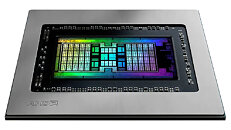
AMD Files Complaint Against Realtek, TCL for Graphics Patent Infringement
AMD and ATI Technologies ULC have filed a complaint with the United States International Trade Commission (USITC) against Realtek Semiconductor and TCL Industries holdings. The complaint lists five patent infringements from both companies, mostly related to graphics technologies such as texture decompression, a unified shader approach to graphics architectures, a multi-threaded graphics processing system, as well as methods to synchronize thread wavefront data and events and a patent covering a processing unit for asynchronous dispatch.
According to AMD, both companies integrated solutions based on AMD's intellectual property without appropriate, prior licensing. The USITC has already come forward with an investigation announcement towards a number of Realtek and TCL-designed products, including graphics systems, digital televisions, and assorted components, found in some products shipped and sold in the U.S. market. The lawsuit aims for an exclusion order and cease and desist on sales of affected products.
According to AMD, both companies integrated solutions based on AMD's intellectual property without appropriate, prior licensing. The USITC has already come forward with an investigation announcement towards a number of Realtek and TCL-designed products, including graphics systems, digital televisions, and assorted components, found in some products shipped and sold in the U.S. market. The lawsuit aims for an exclusion order and cease and desist on sales of affected products.











































